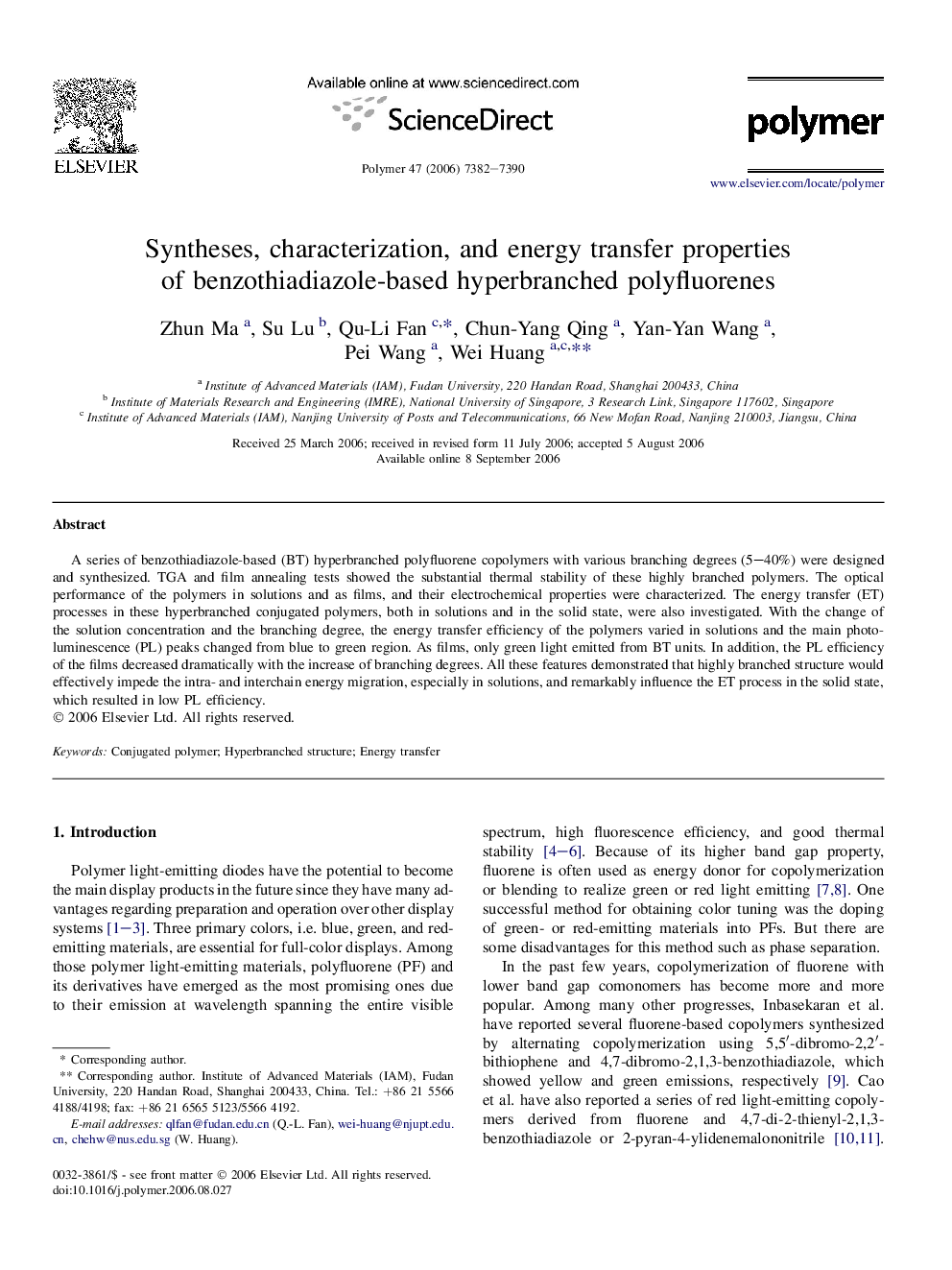| Article ID | Journal | Published Year | Pages | File Type |
|---|---|---|---|---|
| 5188792 | Polymer | 2006 | 9 Pages |
Abstract
A series of benzothiadiazole-based (BT) hyperbranched polyfluorene copolymers with various branching degrees (5-40%) were designed and synthesized. TGA and film annealing tests showed the substantial thermal stability of these highly branched polymers. The optical performance of the polymers in solutions and as films, and their electrochemical properties were characterized. The energy transfer (ET) processes in these hyperbranched conjugated polymers, both in solutions and in the solid state, were also investigated. With the change of the solution concentration and the branching degree, the energy transfer efficiency of the polymers varied in solutions and the main photoluminescence (PL) peaks changed from blue to green region. As films, only green light emitted from BT units. In addition, the PL efficiency of the films decreased dramatically with the increase of branching degrees. All these features demonstrated that highly branched structure would effectively impede the intra- and interchain energy migration, especially in solutions, and remarkably influence the ET process in the solid state, which resulted in low PL efficiency.
Related Topics
Physical Sciences and Engineering
Chemistry
Organic Chemistry
Authors
Zhun Ma, Su Lu, Qu-Li Fan, Chun-Yang Qing, Yan-Yan Wang, Pei Wang, Wei Huang,
